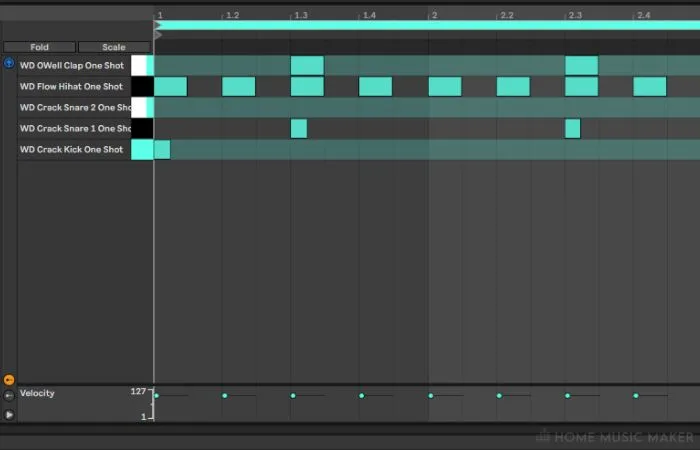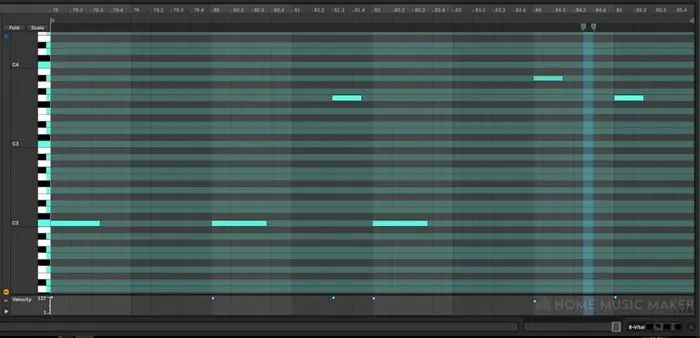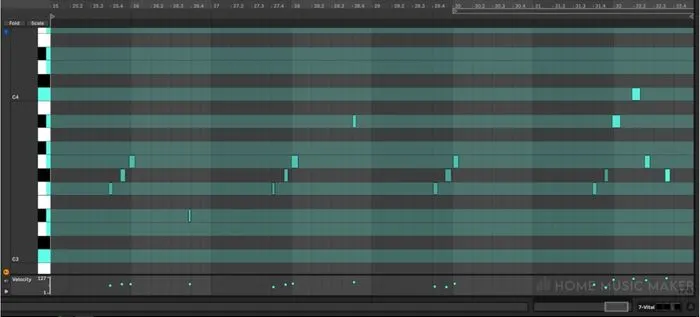KEY TAKEAWAYS:
To make a Trap Nation style track, you can use free sample packs and plugin synthesizers available online. Using these tools, you can craft a drum loop, bassline, and melody that together will make a Trap Nation banger.
Trap Nation
Making a hit song for Trap Nation, the popular YouTube channel and record label, can be daunting. However, with some know-how and hard work, you can create a banger that will get millions of plays on the platform.
In this article, I am going to take you step by step through the process,
Let’s get started!
What You Will Need To Follow This Tutorial:
- Ableton Live (90-day free trial)
- Drum Samples (Free Download)
- Vital Synth (Free Download)
Warning, I’m going to make this tutorial as simple as possible. Still, you’ll want experience and knowledge about electronic music production for the best results.
If you get lost, start with some of our other articles, like 9 Mistakes Every New Music Producer Makes or How To Make Dubstep, and then come back when you are ready.
Preparation
First, we are going to need a few things. If you already have a DAW, outstanding. If not, head to ableton.com and snag their 90-day free trial.
Pro Tip
You don’t need Ableton Live. The same concepts apply to most, if not all, DAWs.
Now you need a synth. I recommend Vital. Grab it for free from their website vital.audio.
Then finally, grab a free sample pack from Cymatics.com.
Understand The Style
While waiting for everything to download, head to youtube for some inspiration.
Trap Nation is known for its hard-hitting basslines and aggressive beats, so it’s essential to familiarize yourself with this style of music. Listen to a variety of Trap Nation tracks and take note of the elements that make them so popular, such as the use of drums, synths, and samples.
This one stands out to me, so I’ll use it as inspiration. You can follow along with me, or if you’re confident, feel free to pick a different one.
If you do, you can apply the same concepts and, in the end, get a song that is truly your own. But you will be on your own if you run into problems.
After listening to it a few times, I know the drums are minimal. The bass is heavy but straightforward and features a distorted guitar melody and a simple generic vocal line.
And… HOLY S#!T 475 MILLION VIEWS!
Well, we better get to work if we want any chance of competing with that.
READ NEXT:
Before you start creating, are you sure that you have what you need? Check out our article on whether you need a MIDI keyboard to make beats.
Start With The Drums
First things first, you need to have a solid beat. This is the foundation of any good trap song, and it’s what will get people moving.
An excellent way to make a beat is to start with a simple kick and snare pattern, then add some hi-hats and percussion. Experiment with different sounds and see what works best for you.
Once everything downloads and installs, open up your DAW and import your sample pack. In Ableton, this is done by dragging and dropping from the browser.
Listen to your samples and pick your favorites for kick, snare, hi-hat, and anything else you want to add. Then follow these basic steps.
- Add a kick drum sample to the first beat of the measure.
- Add a snare drum sample on the second and fourth beats of the bar.
- Add a hi-hat sample on the offbeat, between the snare and the kick.
- Layer other percussion elements, such as claps or shakers, to add more texture and depth to the beat.
- Experiment with different samples and layering techniques to find the sound you like.

Drop The Bass
Now we need a bassline, so go ahead and drop Vital onto a new MIDI track and flip through the presets, looking for a bass sound you like.
Pro Tip
Feel free to make your own preset. Vital gives you many options for making sounds, so spend time exploring all the possibilities.
Now pick a scale. I’m going to choose C minor. After playing around with some notes, my MIDI looks like this.

Melody
Next, you need to add some melody. This will make your track stand out and give it that “catchy” factor.
An excellent way to do this is to use a synth or a sample and play around with different chord progressions. Make sure to keep it simple.
The song I liked had a guitar, and Vital has a string pluck preset that sounds close enough after we add some distortion to it.
To spice things up, I’m going to switch to the C minor blues scale.
And after a few minutes, my MIDI looks like this.

Sing Like No One Is Watching
Now the only thing left is you need to add some vocals. Either singing or rapping can do this. You can also use a sample or a vocal chop if you’re not a singer or rapper. Make sure to add some effects to the vocals to make them stand out.
An excellent place to find free-to-use vocals are freesound.org. You can find tons of copyright-free recordings there.
I decided to record myself singing the line, “why did you have to go and turn your back on me?”
Then I pitched it down slightly to make it more unique.
Now with everything playing together, it sounds like this.
It will not win any Grammys, but it’s a good start for less than an hour and no money spent.
Finishing Touches
Make sure to add some personality to your track.
This can be done by adding some interesting sound effects or a breakdown that showcases your creativity.
READ NEXT:
Will your beat be instrumental, or will it feature a vocalist? If you want to have vocals but don’t know anyone, check out our article on how to get in contact with rappers.
Related Questions
What Bpm Is Trap Music?
The tempo of trap music usually ranges between 140-160 BPM. However, some tracks can be slower or faster, depending on the artist’s preference.
What Is The Best Scale For Trap Music?
There is no one “best scale” for making trap music. However, the most common scale is the natural minor scale.
What Is Sampling In Trap Music?
Sampling in trap music refers to taking a portion or sample of a sound recording, such as a drum beat or a melody, and incorporating it into a new composition.
This can be done using a digital audio workstation (DAW) or a sampler, a device or software that allows you to record, manipulate and play back samples.
Sampling is a common technique used in many genres of music, particularly Trap, Hip-hop, electronic, and dance music. It allows producers to use existing sounds and recordings in their music, creating new compositions and remixes.
How To Make A Trap Melody?
Trap music often makes use of a lot of tension in the melodies. This can be done using specific scale intervals like a minor second, minor third, and minor seventh.
Do You Need A Sequencer To Make Trap Music?
A sequencer is a tool, software, or hardware that allows you to record, edit, and playback MIDI data (Musical Instrument Digital Interface).
A sequencer can record and edit MIDI information, such as note pitches, velocities, and timing, and then play it back using a MIDI-enabled instrument or software synthesizer.
You don’t technically need to use a sequencer to make trap, but it is very common and used by most artists.
Final Words
In conclusion, making a trap banger is easier than it seems.
Just remember to keep it simple. Add a solid beat, a catchy melody, some vocals, and some personality.
And don’t be afraid to experiment and try new things. Now go forth and make some fire trap music!
READ NEXT:
Now that you’ve created a beat, you want it to be mastered. But what if you don’t know how to do this? Check out our article on how to find a mastering engineer.


 Want to connect with other music producers for help and guidance?
Want to connect with other music producers for help and guidance?